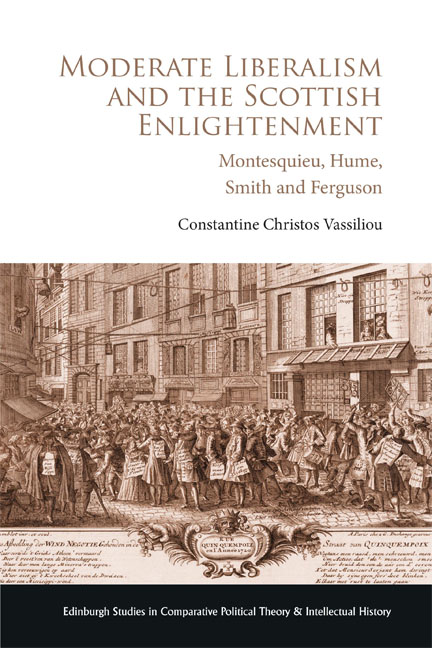3356294 results

Interrogating Lesbian Modernism
- Histories, Forms, Genres
-
- Published by:
- Edinburgh University Press
- Published online:
- 06 March 2025
- Print publication:
- 01 June 2023

An Introduction to Ethics
-
- Published online:
- 06 March 2025
- Print publication:
- 02 January 2025
-
- Textbook
- Export citation

Moderate Liberalism and the Scottish Enlightenment
- Montesquieu, Hume, Smith and Ferguson
-
- Published by:
- Edinburgh University Press
- Published online:
- 06 March 2025
- Print publication:
- 31 July 2023

Gendering Secession
- White Women and Politics in South Carolina, 1859–1861
-
- Published online:
- 06 March 2025
- Print publication:
- 13 March 2025

Globalizing Europe
- A History
-
- Published online:
- 06 March 2025
- Print publication:
- 13 March 2025

Decoherence and Quantum Darwinism
- From Quantum Foundations to Classical Reality
-
- Published online:
- 06 March 2025
- Print publication:
- 13 March 2025

The Status of the Girl Child under International Law
- A Semioethic Analysis
-
- Published online:
- 06 March 2025
- Print publication:
- 13 March 2025

Immoral Traffic
- An Ethnography of Law, NGOs, and the Governance of Prostitution in India
-
- Published online:
- 06 March 2025
- Print publication:
- 30 April 2025

Science, Pseudoscience, and the Demarcation Problem
-
- Published online:
- 06 March 2025
- Print publication:
- 06 March 2025
-
- Element
-
- You have access
- HTML
- Export citation

Islamic Finance and Sustainable Development
-
- Published online:
- 06 March 2025
- Print publication:
- 06 March 2025
-
- Element
-
- You have access
- HTML
- Export citation

Metacognition in Language Teaching
-
- Published online:
- 06 March 2025
- Print publication:
- 06 March 2025
-
- Element
-
- You have access
- HTML
- Export citation

The Orchestra of the Cappella Reale, Naples, 1750–1800
-
- Published online:
- 06 March 2025
- Print publication:
- 30 April 2025
-
- Element
- Export citation

Staging Class Conflict in the UK
-
- Published online:
- 06 March 2025
- Print publication:
- 31 March 2025
-
- Element
-
- You have access
- Open access
- HTML
- Export citation
General Index
-
- Book:
- Luke's Unique Parables
- Published online:
- 28 February 2025
- Print publication:
- 06 March 2025, pp 194-196
-
- Chapter
- Export citation
Appendix A
-
- Book:
- Dominance Through Division
- Published online:
- 01 March 2025
- Print publication:
- 06 March 2025, pp 321-344
-
- Chapter
- Export citation
Chapter Five - Alberti in Rome (c. Late 1420s–1434)
-
- Book:
- Leon Battista Alberti in Exile
- Published online:
- 07 February 2025
- Print publication:
- 06 March 2025, pp 243-316
-
- Chapter
- Export citation
Self-reports vs clinician ratings of efficacies of psychotherapies for depression: a meta-analysis of randomized trials
-
- Journal:
- Epidemiology and Psychiatric Sciences / Volume 34 / 2025
- Published online by Cambridge University Press:
- 06 March 2025, e15
-
- Article
-
- You have access
- Open access
- HTML
- Export citation
Time for a break?: On Tanner’s vision of temporal discontinuity
-
- Journal:
- Scottish Journal of Theology , First View
- Published online by Cambridge University Press:
- 06 March 2025, pp. 1-10
-
- Article
- Export citation
3 - “Proteus”
- from Ulysses with Introductory Essays
-
- Book:
- The Cambridge Ulysses: The 1922 Text with Essays and Notes
- Published online:
- 20 February 2025
- Print publication:
- 06 March 2025, pp 83-106
-
- Chapter
- Export citation
5 - How Do Drugs Cause Harm?
-
- Book:
- How to Talk to Your Child About Drugs
- Published online:
- 13 February 2025
- Print publication:
- 06 March 2025, pp 72-97
-
- Chapter
- Export citation

